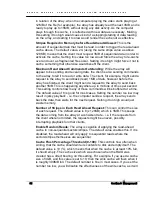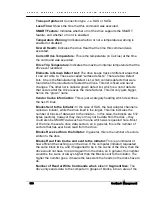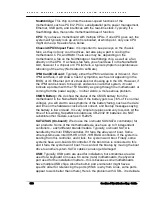
G A L A X Y ® A U R O U R A C O N F I G U R A T I O N A N D S Y S T E M I N T E G R A T I O N G U I D E
104
Section 3 Management
3.1.12
SENSOR Details
A sensor is usually a chip, optical sensor, switch, or specialized resistor
located inside the array, used to detect the status of a component, such
detecting a voltage, fan speed, or temperature. This screen allows you to see
the various sensors, and the range for each. A sensor which goes out of this
range could indicate a component which either has failed or which may fail
soon.
For each sensor, we see the sensor name, it's current value, and a status
indicator which indicates whether or not it is inside of the range. The lower limit
and upper limit define the range. Here is an explanation of the sensors listed
above:
3.3V:
This is the +3.3V power output as seen from the motherboard. This
voltage is especially important for the CPU.
12V:
This is the +12V power output as seen from the motherboard. This
voltage is especially important for powering the motors on the hard drives as
well as the fans in the system.
5V:
This is the +5V power output as seen from the motherboard. This voltage
operates the majority of electrical circuits within the system.
5VSB:
This is the +5V Standby power output as seen from the motherboard.
The main use of this is it powers the circuitry necessary to turn on the system.
It also powers the IPMI card (If installed).
Batt:
This is the voltage of the CMOS battery. This battery retains the settings
for booting the array when the system is off or unplugged.
IntRightFan/IntMiddleFan/IntLeftFan:
These are the main system cooling
fan speeds. On the array in the example above, there are three internal fans –
they are located internally in the center of the array, one on the right, one on
the middle, and one on the left. In this example, the fans spin at a maximum of
about 4,600 RPM. Other systems may have more fans, and some systems
have fans which spin as fast as 11,000 RPM.
EnclosureTemp:
This is the temperature as measured at the motherboard –
usually with a sensor located near the card slots. Left-click on the Return to
















































